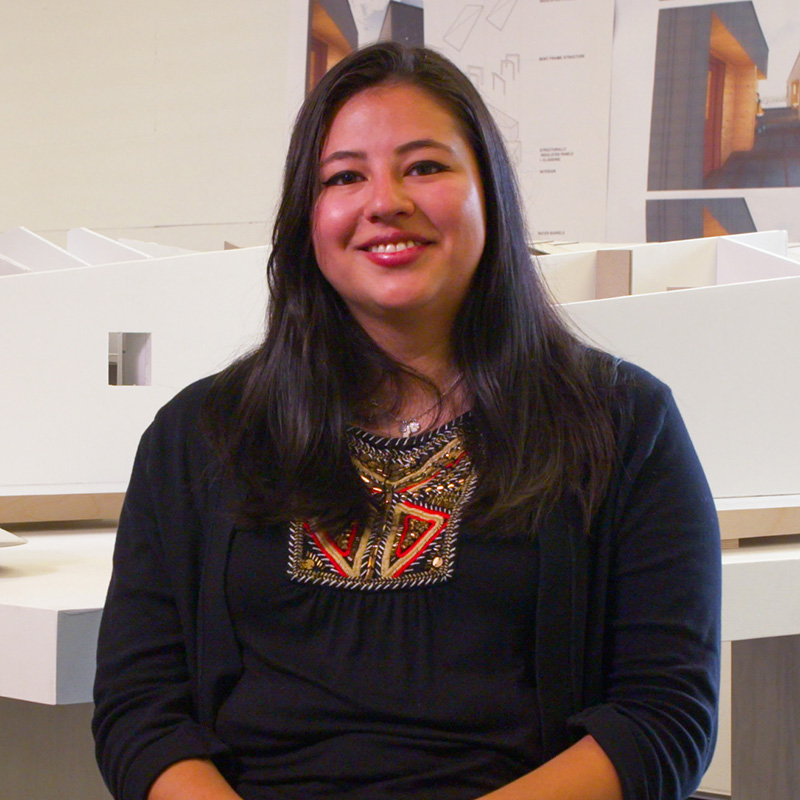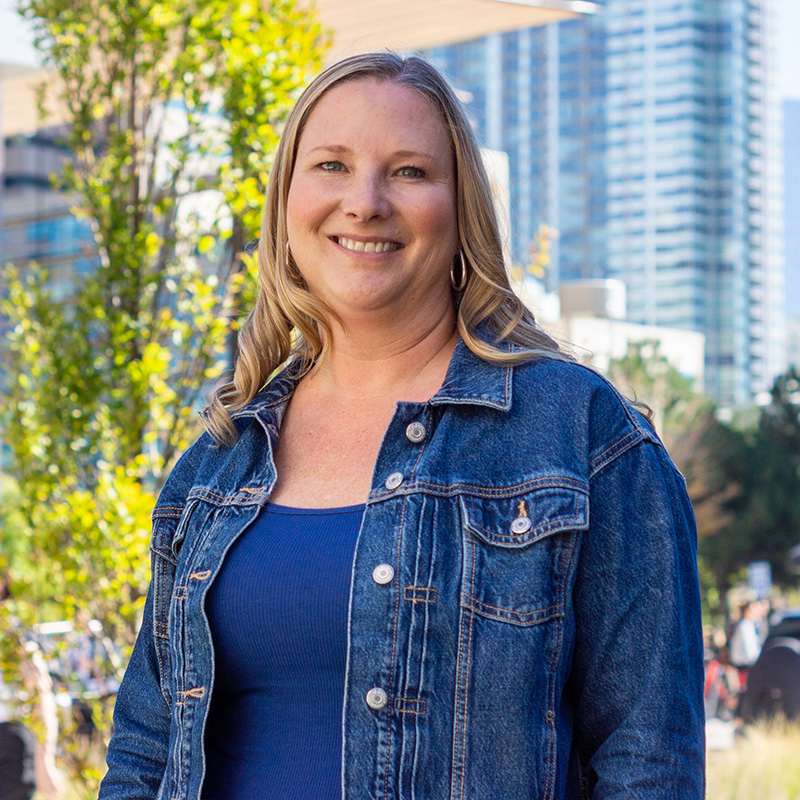Paola Larios
Master of Architecture Candidate ’23
Only a vibrant city and the opportunity of a lifetime could draw this Texan away from her family. CU Denver delivered both and enabled her to impact climate change from across the globe.
When Paola Larios was looking at master’s in architecture degree programs, she did her homework. She wanted something that was competitive and in an interesting city that would help make moving away from her family network in El Paso, Texas, a little easier. And she wanted to have a unique experience, which is why CU Denver’s Design Build Graduate Certificate Program stood out. She’d have a chance to work on a real-world project. What she didn’t know was that it would make a difference nearly 10,000 miles away—in Antarctica.
She and 21 other CU Denver students helped build field camps for the National Oceanic Atmospheric Administration’s National Marine Fisheries Service. The structures, which include a galley and a berthing space, would become the home for eight scientists conducting marine research to enable ecosystem-based fishery management in the Southern Ocean. Paola soon realized that the Cape Shirreff field camp was a project unlike any other. “Our professors said, ‘This isn’t going to be in the mountains, where people might see it,’” she said. “The government is our client, and the work will have to travel across continents.”
The Cape Shirreff design-build project “pushed the boundaries of what an architect or a designer can be and what kind of impact we can have.”
The College of Architecture and Planning students worked with faculty, Bespoke Project Solutions, and OZ Architecture on the Cape Shirreff field camp. Logistic concerns forced Paola and her teammates to constantly challenge themselves. “With shipping [the materials] down in containers and moving them onto the boat, and then onto the Zodiac and across slippery rocks, we had to find ways to make good ideas even better,” she said. The project, which completed its first phase in June 2022, delivered on its promise. “It pushed the boundaries of what an architect or a designer can be and what kind of impact we can have,” Paola said. “This was the project of our lives.”
The build, which also had to address sustainability and a harsh maritime environment, came together quickly, and moved from the design phase to construction in just six months. Now, Paola is focusing on earning a historic preservation certificate. She’s excited to have worked on such an interesting project as a graduate student, even if it was challenging. “You forgot how tired you were,” she said. “You forgot how much stress you have. All of that just goes away because you see how happy [the client] is. That’s not something that a lot of people in school get to see.





